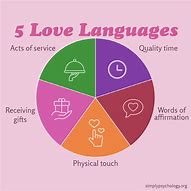Understanding Love Languages
Introduction
Have you ever felt like you and your partner are speaking different languages? Not literally, of course, but in the way you express love and affection? If so, you’re not alone! Many couples experience communication breakdowns that stem from differing love languages. Understanding these languages can be a game-changer for your relationship. In this article, we’ll dive deep into the concept of love languages, how they affect your relationship, and practical tips to strengthen your bond.
What Are Love Languages?
The Concept of Love Languages
The term “love languages” was coined by Dr. Gary Chapman in his book The 5 Love Languages: The Secret to Love That Lasts. Chapman identified five distinct ways people express and receive love. Understanding these languages can help partners communicate their feelings more effectively and meet each other’s emotional needs.

The Five Love Languages
- Words of Affirmation
- Acts of Service
- Receiving Gifts
- Quality Time
- Physical Touch
Each love language represents a different way of expressing affection, and knowing your partner’s preferred language can significantly enhance your relationship.
Why Love Languages Matter
Building Emotional Connection
Understanding love languages is crucial for building emotional intimacy. When partners speak each other’s love languages, they create a deeper connection that fosters trust and understanding.
Reducing Misunderstandings
Miscommunication often arises when partners express love in ways that don’t resonate with each other. For instance, if one partner values words of affirmation while the other prefers acts of service, they might feel unappreciated or unloved despite their best efforts.
Exploring the Five Love Languages

1. Words of Affirmation
What It Means
For individuals who resonate with this love language, verbal expressions of love are essential. Compliments, praise, and encouraging words make them feel valued and loved.
How to Express It
- Compliment Your Partner: A simple “You look amazing today!” can go a long way.
- Leave Notes: Surprise them with little notes expressing your feelings.
- Verbal Encouragement: Regularly affirm their efforts and achievements.
2. Acts of Service
What It Means
This love language emphasizes actions over words. Partners who value acts of service feel loved when their significant other helps them with tasks or chores.
How to Express It
- Help with Chores: Take on tasks your partner dislikes or is overwhelmed by.
- Cook a Meal: Surprise them with their favorite dish after a long day.
- Run Errands: Offer to handle errands that they find stressful.
3. Receiving Gifts

What It Means
For some, gifts are a tangible representation of love. It’s not about materialism; it’s about thoughtfulness and effort behind the gift.
How to Express It
- Thoughtful Surprises: Bring home their favorite snack or a small gift just because.
- Celebrate Special Occasions: Remember anniversaries and birthdays with meaningful presents.
- Create Memories: Consider giving experiences (like tickets to a concert) instead of physical items.
4. Quality Time
What It Means
Quality time is all about undivided attention. Those who value this language feel cherished when their partner prioritizes spending time together without distractions.
How to Express It
- Date Nights: Schedule regular outings or cozy nights in where you focus solely on each other.
- Limit Distractions: Put away phones and turn off the TV during conversations.
- Engage in Activities Together: Whether it’s cooking or hiking, do things you both enjoy.
5. Physical Touch
What It Means
For many, physical touch is the most direct way to express love. Hugs, kisses, and cuddling provide comfort and reassurance.
How to Express It
- Affectionate Gestures: Hold hands while walking or give spontaneous hugs.
- Cuddle Time: Spend time snuggling on the couch while watching a movie.
- Intimacy: Don’t underestimate the power of physical intimacy in strengthening your bond.
Identifying Your Love Language
Self-Reflection Questions
To discover your primary love language, consider these questions:
- What makes you feel most loved?
- How do you typically express love to others?
- What do you often complain about in your relationship?
Taking the Love Language Quiz
Dr. Chapman offers a free quiz on his website that can help you identify your primary love language and that of your partner’s. This tool is an excellent starting point for improving communication in your relationship.
Communicating About Love Languages
Open Dialogue with Your Partner
Once you’ve identified each other’s love languages, have an open conversation about them:
- Share what makes you feel loved.
- Discuss how you can both make an effort to speak each other’s languages.
Avoiding Assumptions
Don’t assume that your partner knows what makes you feel loved. Be explicit about your needs and encourage them to do the same.

Practical Tips for Strengthening Your Relationship Through Love Languages
1. Make it a Habit
Incorporate expressions of love into your daily routine based on each other’s preferred languages. Consistency reinforces feelings of affection.
2. Be Patient and Understanding
Learning to speak someone else’s love language takes time and effort. Be patient with each other as you navigate this process together.
3. Celebrate Progress
Acknowledge when your partner makes an effort to speak your love language—even if it’s not perfect! Celebrating these moments encourages continued growth.
4. Adapt as Needed
As relationships evolve, so do individual needs. Regularly check in with each other about how you’re feeling loved and if anything has changed.
5. Extend Beyond Romantic Relationships
Remember that love languages apply not only to romantic relationships but also to friendships and family dynamics. Understanding these can improve all types of connections!
Common Misconceptions About Love Languages
Love Languages Are Fixed
Many people believe they have only one primary love language; however, most individuals resonate with multiple languages at different times or in various contexts.
It’s All About Romance
While the concept originated from romantic relationships, understanding love languages can enhance any relationship—friendships, family ties, or even workplace dynamics!
Conclusion
Understanding and applying the concept of love languages can significantly strengthen your relationship by fostering better communication and deeper emotional connections. By identifying yours and your partner’s primary love languages, you can create a loving environment where both partners feel valued and understood. Remember that relationships require ongoing effort; regularly checking in on each other’s needs will keep the connection vibrant and fulfilling!
FAQs
1. How do I find out my partner’s love language?
You can ask them directly or take the official quiz developed by Dr. Gary Chapman together for insights into each other’s preferences.
2. Can my love language change over time?
Yes! Life experiences may shift how we prefer to give and receive love; it’s essential to stay attuned to these changes through open communication.
3. What if my partner doesn’t understand my love language?
Be patient; explain what makes you feel loved clearly and encourage them to express their feelings as well.
4. Can I have more than one primary love language?
Absolutely! Many people resonate with multiple love languages; understanding this can help improve communication further.
5. How often should we discuss our love languages?
Regular check-ins are beneficial—consider discussing them during date nights or whenever significant changes occur in life circumstances.
This exploration into understanding love languages provides couples with valuable insights into enhancing their relationships through effective communication strategies tailored to individual needs!



God bless you